November 5, 2025
The Ultimate Guide to Tuscany’s Noble Wines: Brunello, Vino Nobile, Chianti Classico & Super Tuscans
Your Expert Guide to Planning the Perfect Tuscan Wine Experience
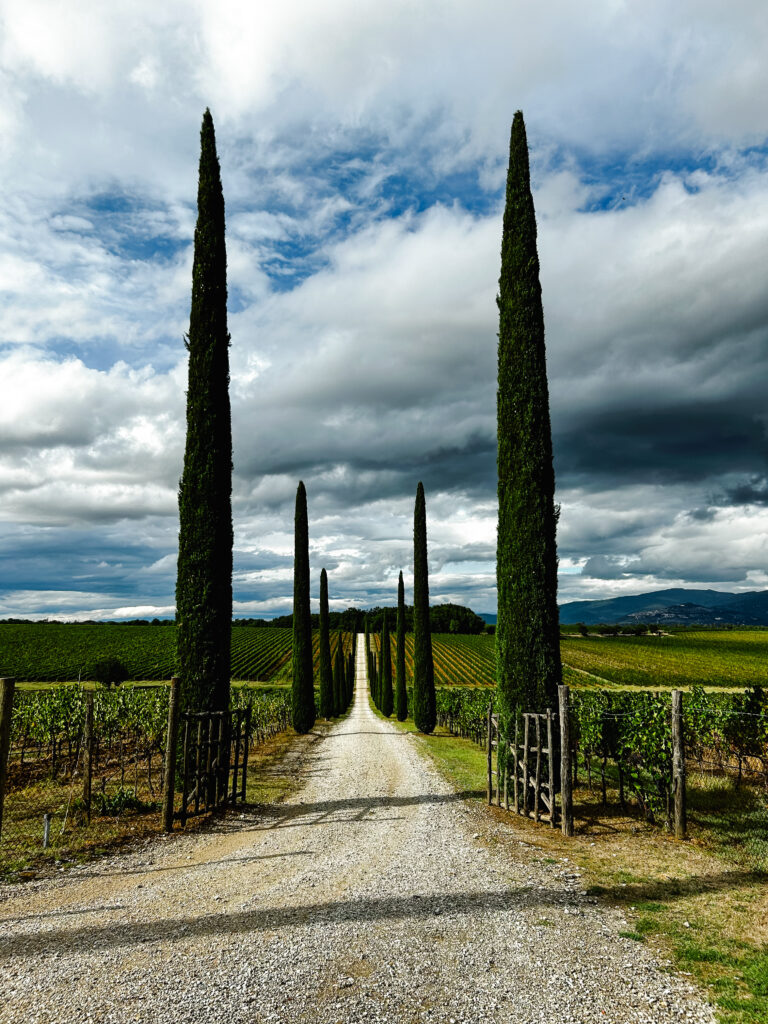
When you close your eyes and imagine Tuscany, what do you see? Rolling hills carpeted with vineyards, cypress-lined drives leading to ancient stone villas, and cellars filled with some of the world’s most celebrated wines. For discerning travelers seeking an authentic Italian wine experience, Tuscany offers an unparalleled journey through centuries of winemaking tradition. As your partner in wine travel, I created Mistral Winds Travel to create unforgettable wine adventures through these storied landscapes. This guide to Tuscany’s nobile wines will help you understand what you’ll experiece in the region.
Whether you’re dreaming of vertical tastings in medieval cellars, private vineyard tours with renowned winemakers, or perfectly paired meals at Michelin-starred restaurants overlooking the vines, understanding Tuscany’s noble wines is essential to planning your perfect culinary escape. Let’s explore four of the region’s most prestigious wine categories that should be on every wine lover’s radar.
To receive short, bite-sized inspiration about travel, food, and wine each Thursday, join the Mistral Winds Travel newsletter list.
Guide to Tuscany’s Nobile Wines: Part 1
Brunello di Montalcino: The King of Tuscan Wines
The Crown Jewel of Sangiovese
Brunello di Montalcino stands as one of Italy’s most prestigious wines, crafted from 100% Sangiovese Grosso grapes in the hills surrounding the medieval town of Montalcino. This wine holds Italy’s highest DOCG classification and represents the pinnacle of what Sangiovese can achieve. The first modern Brunello was created by Ferruccio Biondi-Santi in 1888, establishing a winemaking legacy that continues to captivate collectors and connoisseurs worldwide.
What Makes Brunello Extraordinary
The magic of Brunello lies in Montalcino’s unique terroir. Located south of Siena, this region enjoys warmer temperatures and lower rainfall than other parts of Tuscany, allowing the Sangiovese grapes an extended ripening period. The result? Wines with exceptional depth, bold fruit flavors, high tannins, and remarkable aging potential.
When young, Brunello bursts with vibrant flavors of tart cherry, wild strawberry, blackberry, and violets, complemented by earthy notes of espresso and tilled soil. The wine’s high acidity and mouth-gripping tannins can seem austere in youth, which is why most experts recommend cellaring these wines for at least a decade. With proper aging, Brunello transforms magnificently—the fresh fruit gives way to dried figs, candied cherries, hazelnuts, and sun-baked leather, while the tannins become chocolatey and the acidity turns succulent.
Understanding Brunello Classifications
Brunello di Montalcino DOCG
- Must be aged a minimum of 2 years in oak and 4 months in bottle
- Cannot be released until January 1st of the fifth year after harvest
- Minimum 12.5% alcohol by volume
- Modern producers may use smaller French barriques for more pronounced vanilla and oak notes
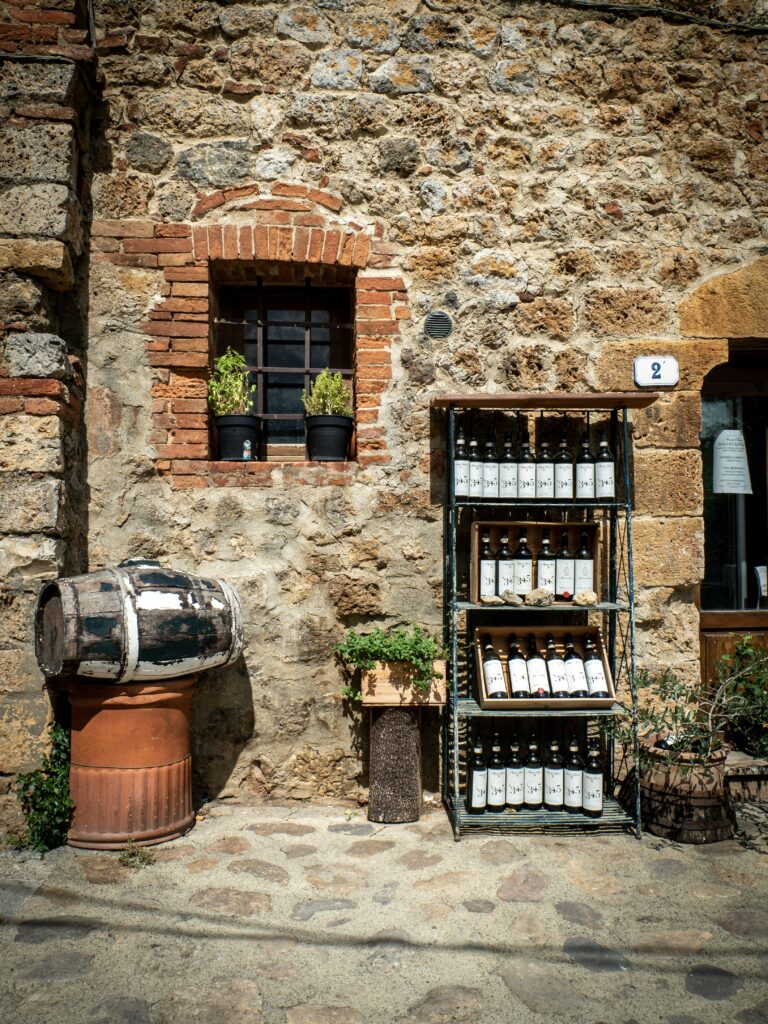
Brunello di Montalcino Riserva DOCG
- Requires 2 years in oak and 6 months in bottle
- Released January 1st of the sixth year after harvest
- Only produced in exceptional vintages
- Commands premium prices and offers even greater aging potential
Rosso di Montalcino DOC
- The “little brother” to Brunello
- Made from the same 100% Sangiovese grapes and terroir
- Aged just 1 year before release (can be released in September following harvest)
- More approachable, fruit-forward, and affordable
- Perfect for enjoying while your Brunello ages
Planning Your Brunello Experience
At Mistral Winds Travel, I can arrange exclusive tastings at historic Montalcino estates where you’ll sample vertical flights spanning decades, witness traditional barrel-aging techniques in ancient cellars, and enjoy lunches expertly paired with these noble wines. Imagine savoring a perfectly aged Brunello Riserva alongside wild boar ragù or bistecca alla fiorentina while overlooking the very vineyards that produced your wine.
Guide to Tuscany’s Nobile Wines: Part 2
Vino Nobile di Montepulciano: Tuscany’s Best-Kept Secret
The Noble Wine’s Renaissance
Vino Nobile di Montepulciano may be overshadowed by its more famous neighbors, but discerning travelers know this wine offers extraordinary quality and value. Often described as having “the perfume of Chianti Classico with the richness of Brunello di Montalcino,” Nobile has been celebrated since the 1600s when poet Francesco Redi called it “the king of all wines.”
History and Heritage
The picturesque hilltop town of Montepulciano in southeastern Tuscany has produced wine since at least the 8th century. Thomas Jefferson himself declared it “a very favorite wine” and “a necessity of life.” The wine received DOC status in 1966 and became one of Italy’s first DOCG wines in 1980—a testament to its historical significance.
The Nobile Difference
While similar to other Sangiovese-based Tuscan wines, Vino Nobile has its own distinct personality thanks to Montepulciano’s unique terroir. The region features more clay-rich soils and a continental climate compared to Montalcino’s Mediterranean influence, resulting in wines with remarkable elegance and freshness.
Grape Composition:
- Minimum 70% Sangiovese
- Up to 30% other Tuscan varieties (Canaiolo Nero, Mammolo, Colorino)
- International varieties like Cabernet Sauvignon and Merlot permitted
- Maximum 5% white grapes allowed
Nobile’s Flavor Profile
Vino Nobile delights with aromas of raspberry, plum, violet, and strawberry, balanced by subtle spice and earthy notes. The wine offers a medium body, firm but smooth tannins, and bright acidity that makes it exceptionally food-friendly. While approachable in youth with vibrant red fruit, Nobile can age gracefully, developing complex secondary flavors of tobacco, leather, and candied fruit.
Classifications and Aging Requirements
Vino Nobile di Montepulciano DOCG
- Minimum 2 years aging (1 year in oak)
- Released after 3 years after harvest
- Fresh, elegant, and versatile
Vino Nobile di Montepulciano Riserva DOCG
- Minimum 3 years aging (1 year in oak, 6 months in bottle)
- Released 4 years after harvest
- Greater depth, structure, and complexity
- Some producers, like Boscarelli, have achieved Wine Spectator Top 100 recognition three times
Rosso di Montepulciano DOC
- More fruit-forward and approachable
- Released March 1st following harvest
- Excellent value and broadly food-friendly
Why Wine Lovers Should Visit Montepulciano
This medieval gem offers stunning Renaissance architecture, breathtaking views, and a wine culture that predates most European regions. Mistral Winds Travel can arrange intimate cellar visits, vertical tastings of award-winning Riservas, and lunches in underground restaurants where traditional Tuscan cuisine perfectly complements these elegant wines.
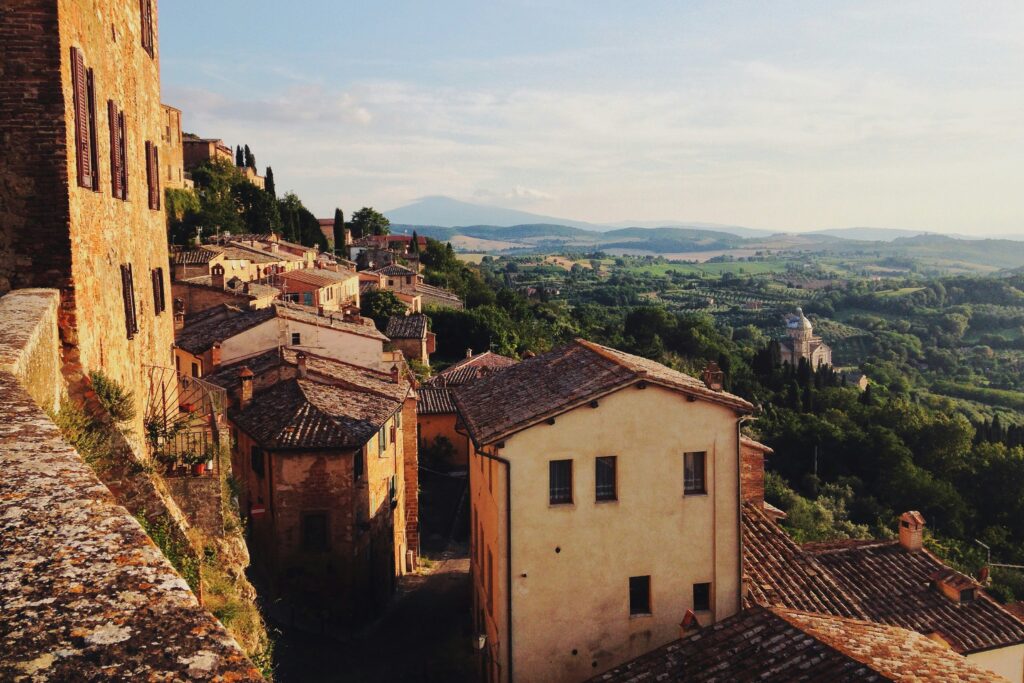
Guide to Tuscany’s Nobile Wines: Part 3
Chianti Classico: The Heart and Soul of Tuscany
Italy’s Most Iconic Wine Region
When most people think of Tuscan wine, they think of Chianti. This legendary wine region, first officially delimited in 1716 by Grand Duke Cosimo III de’ Medici, represents over 300 years of winemaking tradition. Chianti Classico, the original, historic heartland, sits between Florence and Siena and produces wines that embody the very essence of Tuscany.
Understanding the Chianti Universe
Chianti DOCG encompasses a broad area throughout Tuscany with several subzones, while Chianti Classico DOCG refers specifically to the historic heartland. This is a more restricted zone with stricter quality standards. The difference is significant: Chianti requires only 70% Sangiovese, while Chianti Classico demands at least 80%, with no white grapes permitted.
The Chianti Classico Experience
Imagine walking through an Italian grocery store: preserved sour Amarena cherries at the entrance, bunches of dried oregano overhead, dark balsamic vinegar lining the walls, dry salami being sliced at the counter, and dark espresso brewing at the bar. This is what Chianti smells and tastes like, to me it’s Italy in a glass.
The wine typically displays medium garnet color with aromas of sun-dried tomatoes, balsamic vinegar, black cherry, blackberry, cigar box, and coffee. You’ll encounter some tartness and coarseness on the palate, but these aren’t flaws—they’re classic characteristics of Sangiovese that make the wine so food-friendly.
The Three Tiers of Chianti Classico
Chianti Classico Annata
(Not labeled as such, but indicated by absence of “Riserva” or “Gran Selezione”)
- Minimum 80% Sangiovese
- Aged 12 months minimum
- Fresh and fruity style with little or no oak
- Bright red cherry, herbs, and subtle savoriness
- Released October 1st following harvest
- Perfect for white meats, grilled pork, turkey, or oily fish like tuna
Chianti Classico Riserva
- Minimum 80% Sangiovese
- Aged 24 months minimum (3 months in bottle)
- More structured with integrated oak
- Red cherry fruit with subtle clove and spice
- Greater aging potential
- Excellent value in the $25-30 range
Chianti Classico Gran Selezione
- Minimum 90% Sangiovese (can only add indigenous red grapes)
- Aged 30 months minimum
- Only 6% of total Chianti Classico production
- Most sought-after and age-worthy
- Intense tannins with dried cherry, smoke, balsamic, and leather
- Reserved for exceptional vineyards and vintages
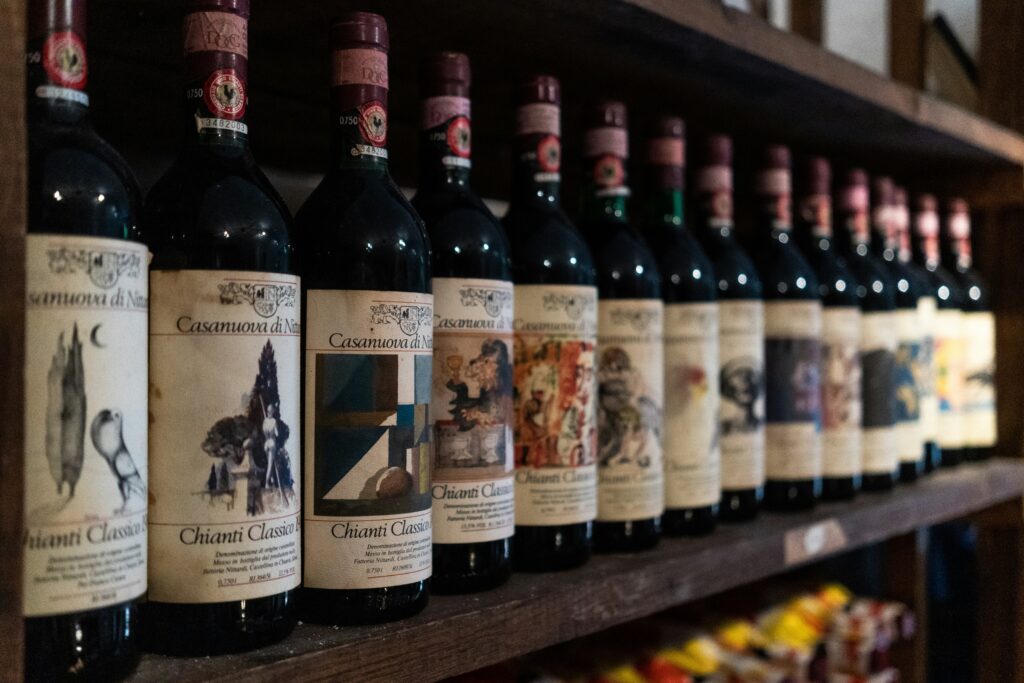
The New UGA System
Starting in 2023, Chianti Classico introduced 11 Unità Geografiche Aggiuntive (UGAs), which are geographic subzones that appear on Gran Selezione labels. These terroir-driven designations help wine enthusiasts understand the specific characteristics of each area, from the elegant, floral wines of Lamole to the earthy, structured offerings of Gaiole.
Chianti Classico by the Numbers
- 172,900 acres (70,000 hectares) total, with only 16,800 acres (6,800 hectares) producing DOCG wines
- 35-38 million bottles produced annually (compare to Bordeaux’s 650 million)
- 345 wineries throughout the region
- Over 60% of the region is forest
- Vineyards planted at 655-1,640 feet elevation in the north, 980-1,640 feet in central and southern areas
- Became DOCG in 1984
Planning Your Chianti Classico Adventure
The region’s accessibility from Florence (just 40 minutes) makes it perfect for day trips, but Mistral Winds Travel recommends spending several days exploring this diverse wine region. I can arrange private tours through ancient cellars, tastings comparing traditional and modern styles, and meals at family-owned agriturismi where every dish showcases the incredible synergy between Chianti and Tuscan cuisine.
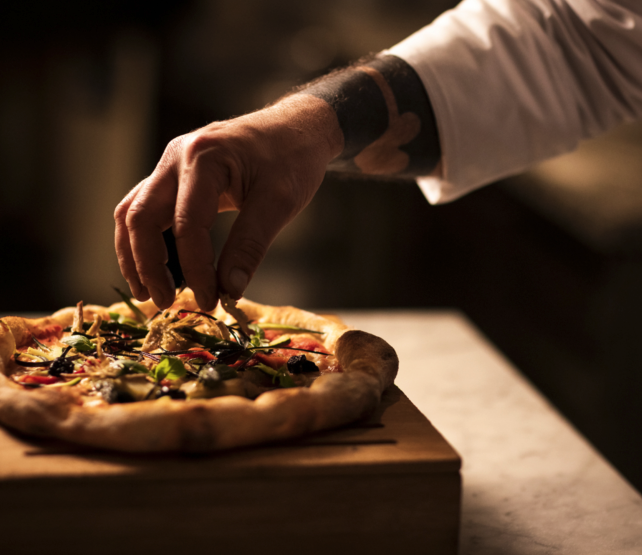
Food Pairing Perfection
Chianti’s high acidity and savory character make it one of the world’s most versatile food wines. It’s essential with tomato-based pasta dishes, pizza, grilled meats, and aged cheeses. The wine’s herbaceous notes complement oregano, thyme, and basil, while its acidity cuts through rich olive oil and cured meats like prosciutto and salami.
Guide to Tuscany’s Nobile Wines: Part 4
Super Tuscans: The Rebels Who Changed Everything
A Revolution in a Bottle
Super Tuscans represent one of the most fascinating stories in modern wine history—a tale of rebellion, innovation, and the courage to challenge centuries-old tradition. These wines, which broke away from Italy’s strict DOC regulations, not only achieved critical acclaim but also helped revitalize Tuscany’s entire wine industry.
The Birth of a Movement
The Super Tuscan story begins in the 1940s when Marchese Mario Incisa della Rocchetta planted Cabernet Sauvignon and Cabernet Franc at Tenuta San Guido in Bolgheri, a coastal area not traditionally known for fine wine. Inspired by his memories of tasting great Bordeaux, he wanted to create something comparable in Tuscany. The wine, called Sassicaia (meaning “stony place”), was initially made only for private consumption.
The breakthrough came in 1968 when the first commercial vintage was released. Despite being labeled as humble Vino da Tavola (table wine) because it didn’t conform to DOC regulations, Sassicaia stunned the wine world in a 1978 blind tasting organized by Decanter magazine, where it outperformed many prestigious Bordeaux.
What Defines a Super Tuscan?
Unlike traditional Tuscan wines with strict grape variety requirements, Super Tuscans are defined by their freedom to experiment:
Common Characteristics:
- Use of international grape varieties (Cabernet Sauvignon, Merlot, Cabernet Franc, Syrah, Petit Verdot)
- May include Sangiovese, often in innovative proportions
- Aged in French barriques rather than traditional large Slavonian oak casks
- Fuller-bodied, more structured than traditional Chianti
- Temperature-controlled fermentation in stainless steel
- Generally higher in alcohol (often 13.5-14.5% ABV)
- Intense, concentrated flavors
- Exceptional aging potential
Classification Evolution
Originally labeled as Vino da Tavola (table wine) due to non-conformity with DOC rules, Super Tuscans now typically carry:
- IGT (Indicazione Geografica Tipica) status, created in 1992 specifically to recognize these quality wines
- Some have achieved DOC or even DOCG status (like Sassicaia)
- Bolgheri DOC (established 1983) became the primary appellation for many coastal Super Tuscans
The Super Tuscan Impact
These revolutionary wines transformed Tuscany’s wine industry in several ways:
- Quality Renaissance: Pushed traditional producers to improve quality and modernize techniques
- International Recognition: Put Italian wines on par with Bordeaux in critics’ eyes and collectors’ cellars
- Investment Appeal: Super Tuscans regularly appear in Liv-ex Power 100; Sassicaia ranked 4th in 2021
- Price Appreciation: The 2019 Sassicaia rose 40% in value within a month of release
- American Market: Became darlings of U.S. wine lovers and critics, with James Suckling playing a pivotal role in their promotion
Tasting Super Tuscans: What to Expect
Appearance: Deep ruby to garnet, often more intensely colored than traditional Sangiovese wines
Aroma: Depending on blend composition:
- Cabernet-dominant: Black currant, cedar, tobacco, graphite, mint
- Merlot-influenced: Plum, chocolate, coffee, dried fruits
- Sangiovese-based: Cherry, leather, dried herbs, balsamic
Palate: Full-bodied with firm, structured tannins, concentrated fruit, and a long finish. Oak aging contributes vanilla, spice, and toasted notes.
Aging: Most Super Tuscans are built to age 10-30 years, developing tertiary complexity.
Is the Term Still Relevant?
While some in the industry question whether “Super Tuscan” remains meaningful as a category since many wines now hold official appellations and the term is considered somewhat informal. However, consumers still recognize and seek out these iconic names. As Carrie Lyn Strong of Casa Lever notes, “Guests ask directly for Tignanello or Sassicaia” by name rather than by category.
The term’s enduring appeal lies in the story it tells: one of innovation, rebellion, and the pursuit of excellence that ultimately elevated all of Italian winemaking.
Do you want short, bite-sized travel, food, and wine inspiration emails each Thursday? If so, join the Mistral Winds Travel newsletter list.

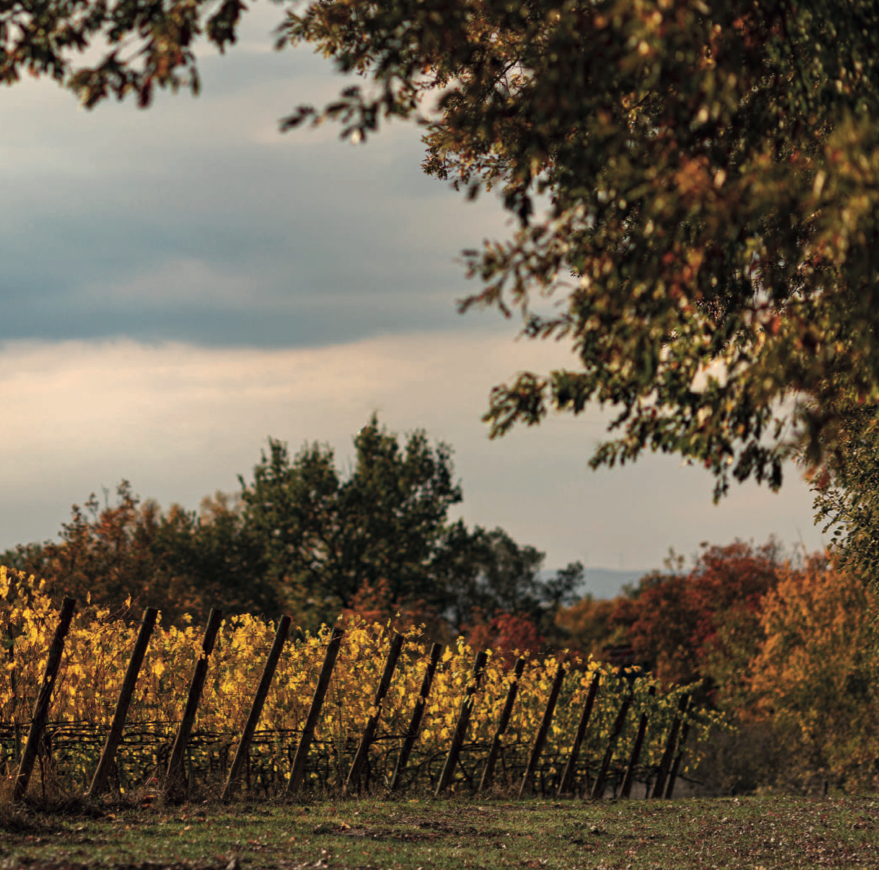
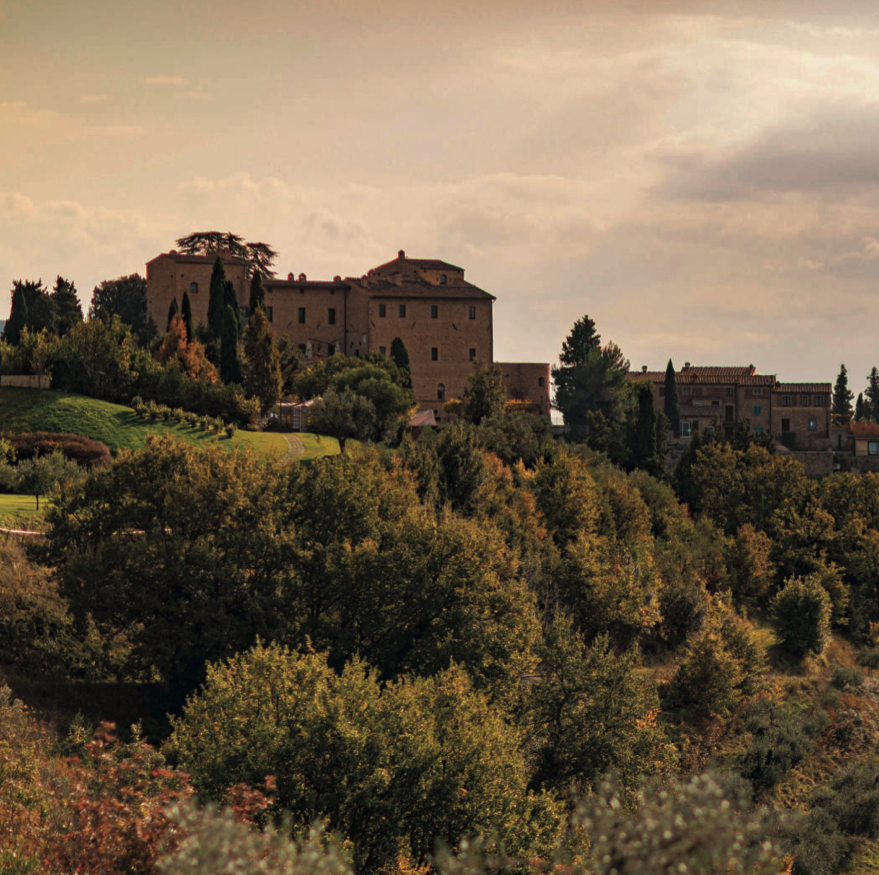
Guide to Tuscany’s Nobile Wines: Part 5
Planning Your Tuscan Wine Journey with Mistral Winds Travel
Why Expert Planning Matters
Tuscany’s wine regions are vast, diverse, and filled with hidden gems that only insiders know about. While you could spend weeks researching wineries, coordinating tastings, securing reservations, and arranging transportation, why not let me handle every detail? At Mistral Winds Travel, I specialize in creating bespoke Italian wine experiences that go far beyond the typical tour.
The Mistral Winds Travel Difference
As a travel advisor specializing in culinary wine vacations, I understand that your time is precious and your expectations are high. Every Tuscan wine experience I create is:
- Stress-Free: I handle every detail from start to finish
- Authentic: Deep connections with local producers and artisans
- Exclusive: Access you can’t get on your own
- Personalized: Designed around your preferences, not a one-size-fits-all template
- Expertly Curated: Based on personal experience in Tuscany’s wine regions, training and certification through Wine and Spirits Education Trust (WSET)
When To Visit
Spring (April-May): Vineyards bursting with new growth, mild temperatures, fewer crowds, ideal for a slower pace and deeper experiences.
Summer (June-August): Warm and vibrant, perfect for outdoor dining, some estates close in August.
Harvest (September-October): Witness the grape harvest, participate in crush activities, stunning autumn colors, excellent weather.
Winter (November-March): Truffle season, fewer tourists, cozy cellar tastings, authentic local experience.
Investment in Excellence
Tuscan wine tours represent an investment in experiences and memories that last a lifetime. Clients consistently have wonderful feedback on the knowledge gained, relationships formed, and wines discovered, which all become treasured parts of their wine journey. Many return year after year to deepen their connection with Tuscany’s producers and terroir.
Ready to Experience Tuscany’s Noble Wines?
Whether you’re a seasoned collector seeking rare library vintages, a passionate enthusiast wanting to deepen your knowledge, or simply someone who loves the combination of great wine, exceptional food, and stunning landscapes, Tuscany offers something magical.
From the regal power of Brunello di Montalcino to the elegant charm of Vino Nobile di Montepulciano, from the soulful terroir expression of Chianti Classico to the innovative excellence of Super Tuscans, these wines tell stories of place, tradition, and passion that can only be fully appreciated in the vineyards and cellars where they’re born.
Let Mistral Winds Travel transform your Tuscan wine dreams into reality. With personalized planning, personal connections in the region, and custom itineraries, you’re sure to have the wine adventure of your dreams, without any of the stress.
Contact me today to begin planning your bespoke Tuscan wine journey. Your taste buds will thank you.
Quick Reference Guide
Brunello di Montalcino
- Grape: 100% Sangiovese Grosso
- Aging: 5 years (Normale), 6 years (Riserva)
- Price Range: $40-$300+
- Best Vintages: 2010, 2012, 2015, 2016, 2019, 2020
- Aging Potential: 10-30+ years
Vino Nobile di Montepulciano
- Grape: Minimum 70% Sangiovese (Prugnolo Gentile)
- Aging: 2 years (Normale), 3 years (Riserva)
- Price Range: $20-$80
- Best Value: Excellent quality at lower prices than Brunello
- Aging Potential: 5-20 years
Chianti Classico
- Grape: Minimum 80% Sangiovese
- Styles: Annata (12 months), Riserva (24 months), Gran Selezione (30 months)
- Price Range: $15-$100+
- Food Pairing: Most versatile of all Tuscan reds
- Aging Potential: 3-15 years depending on style
Super Tuscans
- Grapes: International varieties (Cabernet, Merlot, etc.) with or without Sangiovese
- Classification: IGT, DOC, or DOCG depending on specific wine
- Price Range: $30-$500+
- Investment Grade: Top examples (Sassicaia, Tignanello, Ornellaia, Masseto)
- Aging Potential: 10-30+ years
Mistral Winds Travel specializes in creating personalized itineraries for food and wine lovers. I believe that travel should be transformative, delicious, and completely stress-free. Let me plan your dream wine vacation today.
Sources:
- Wine Folly, “Brunello di Montalcino“
- Wine Folly, “Brunello di Montalcino Wine: It’s Worth the Wait“
- Wine Folly, “Barolo vs. Brunello di Montalcino“
- Wine Folly, “Guide to Sangiovese Wine and Pronunciation”
- Master Class, “Brunello di Montalcino Wine Guide”
- Wine Spectator, “Out of the Tuscan Shadows: Vino Nobile di Montepulciano“
- Wine Spectator, “Wine Spectator Top 100 Wine Tour” (2024)
- Flatiron Wines Blog, “Marvels on the Margins: Part 2 – Vino Nobile di Montepulciano“
- Wine Folly, “Chianti Wine: The Taste, Region and Classic Pairings“
- Wine Folly, “Chianti Classico Wines“
- Wine Folly, “Tasting Challenge: Chianti“
- Commonwealth Wine School, “Tuscany: Chianti and Beyond (Part 1)“
- Decanter, “Wine Legend: Ornellaia 2001“
- Decanter, “Top Super Tuscan Wines“
- Decanter, “Super Tuscans 2.0: Meet the innovators behind the stylish new wave“
- Jancis Robinson, “Tuscany Vintage Chart: 1985 to 2022“
- Jancis Robinson, “Tuscany wine region“
- Wine Enthusiast, “What’s a Super Tuscan and is the Term Still Relevant?“
- James Suckling, “Buy Now: Super Tuscan Wines to Enjoy Today“
Wine Critics and Educators Referenced:
Keywords
- Madeline Puckette – James Beard Award-winning author, Wine Communicator of the Year, Co-founder of Wine Folly
- Jancis Robinson MW – Master of Wine, co-author of World Atlas of Wine
- James Suckling – Former Wine Spectator senior editor, founder of JamesSuckling.com
- Robert Parker – Founder of Wine Advocate, creator of 100-point rating system
- Susan Hulme MW – Master of Wine
- Robert Camuto – Wine Spectator contributing editor
- Jeff Patten – WSET Level 2 certified, Co-founder Flatiron Wines
- Jackson Rohrbaugh – Sommelier at Canlis, Seattle
- Stephen Brook – Wine writer and critic
Tuscany wine tours, Brunello di Montalcino, Vino Nobile di Montepulciano, Chianti Classico, Super Tuscan wines, Italian wine travel, luxury wine tours Italy, Mistral Winds Travel, culinary wine vacations, Tuscany travel planning, wine tasting tours Tuscany, Sangiovese wine, Bolgheri wines, Montalcino wine tours
Summary
This guide explores Tuscany’s four most prestigious wine categories, Brunello di Montalcino, Vino Nobile di Montepulciano, Chianti Classico, and Super Tuscans. It provides luxury wine travelers with expert insights to dream of their perfect Italian wine vacation. From Brunello with its 100% Sangiovese and decade-long aging potential, to Vino Nobile that Thomas Jefferson called “a necessary of life,” to Chianti Classico with its new Gran Selezione tier, to Super Tuscans like Sassicaia and Tignanello that broke tradition to achieve international acclaim. Each wine tells a unique story of place, innovation, and passion. The guide details specific classifications (Normale, Riserva, Gran Selezione), aging requirements, flavor profiles, exceptional vintages, and food pairings for each wine style.
My clients receive comprehensive destination guides, but I believe great travel inspiration should be shared with everyone. Here you'll find insider tips from my travels, wine region discoveries, and destination highlights that might just inspire your next adventure. Whether you're planning a honeymoon, anniversary trip, or culinary escape, let's explore the world together!
Welcome To My
Home On The Web
A cool, dry wind that flows through France's Rhone Valley towards the Mediterranean Sea. It naturally ventilates vineyards, creating the perfect conditions for exceptional French wines and regional gastronomy.
What is a Mistral Wind?